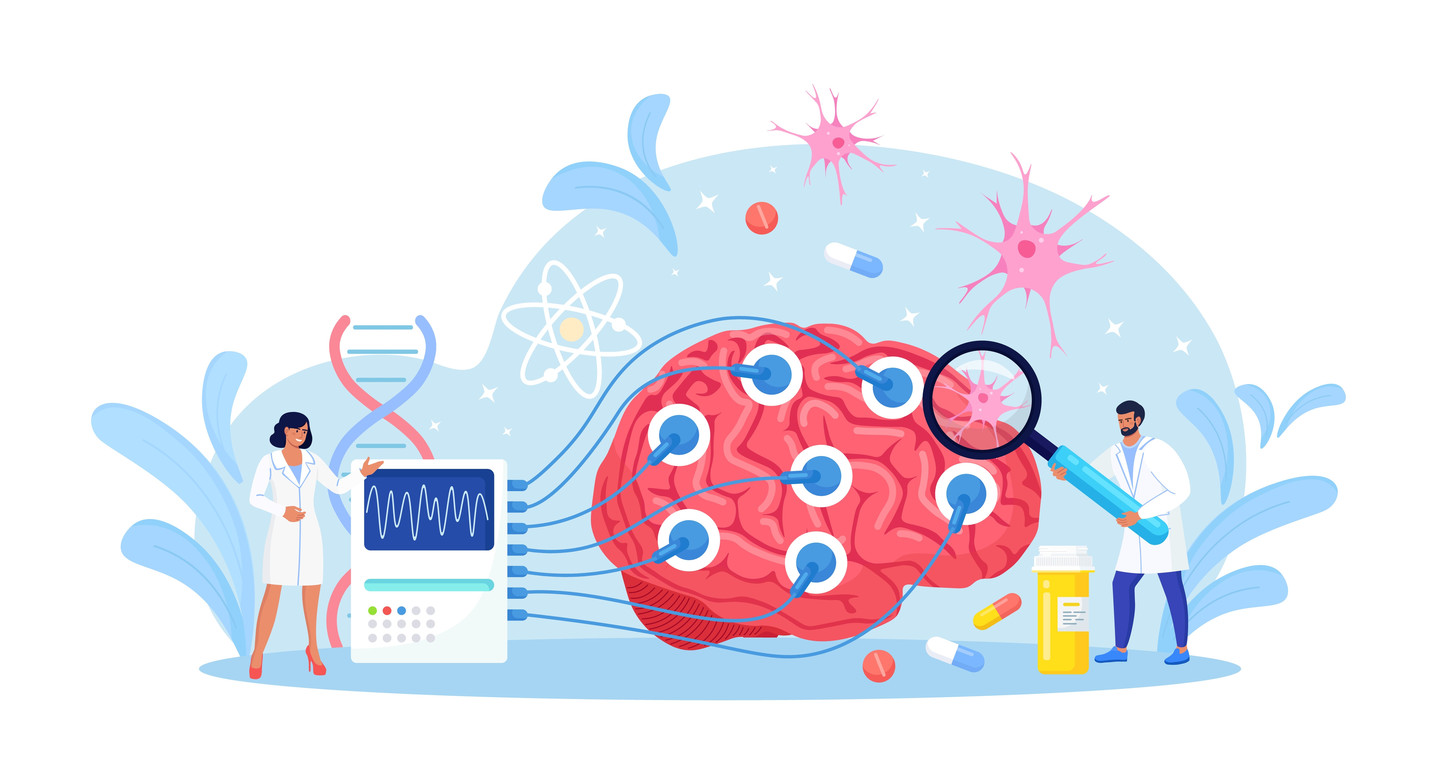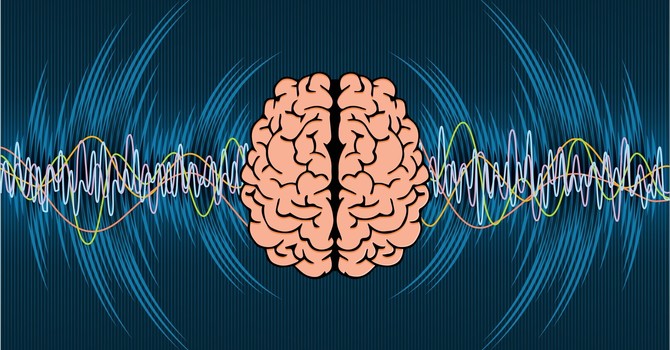
Understanding Your Brain at O’Keefe Matz Functional Health Clinic in Saint Paul
When your mood, focus, or mental clarity feels off, it can be frustrating not knowing why. Traditional tests like MRIs and CT scans show brain structure, but they cannot show how your brain is functioning. That is where quantitative electroencephalography (qEEG), also known as brain mapping, comes in.
At O’Keefe Matz Functional Health Clinic in Saint Paul, qEEG brain mapping provides a real-time look at how your brain communicates, regulates, and responds to stress. By analyzing electrical activity across different brain regions, we can identify the areas that may be overactive, underactive, or out of balance and design therapies that bring your brain back into rhythm.
Here are the top 10 reasons to get a qEEG brain map and how it can support your long-term brain health.
1. You Want to Understand the Root Cause of Brain Fog or Fatigue
Brain fog is one of the most common complaints we hear in the clinic. A qEEG can identify patterns of slowed electrical activity in areas responsible for focus, attention, and cognitive processing. When the brain produces too much slow-wave activity such as delta or theta in the frontal lobes, it can feel like mental exhaustion or fogginess.
Research in Clinical EEG and Neuroscience has shown that individuals with chronic fatigue or cognitive impairment often display these altered brainwave patterns, providing valuable insight into where and why focus and energy decline.
2. You Struggle with Focus, Attention, or Impulsivity
For individuals with ADHD or attention-related challenges, qEEG is one of the most powerful assessment tools available. It can identify patterns such as excessive theta activity or reduced beta activity, which are commonly linked to inattention and distractibility.
A 2020 meta-analysis in Frontiers in Human Neuroscience found that qEEG-guided neurofeedback training significantly improved attention, impulsivity, and executive function by normalizing brainwave activity.
3. You Experience Anxiety or Overthinking
Excessive fast-wave activity, particularly high beta, often shows up in people who feel stuck in their head, experience chronic worry, or cannot relax. A qEEG can reveal overactive frontal or temporal regions that drive this hyperaroused state.
When we see these patterns, therapies such as neurofeedback, biofeedback, Frequency Specific Microcurrent, and acupuncture can be used to calm and retrain the nervous system.
PMC7783691 – Neurofeedback and Anxiety Regulation
4. You Feel Down or Emotionally Flat
In depression, qEEG studies often show reduced activity in the left prefrontal cortex or imbalances between the left and right hemispheres. These functional changes may explain why motivation and mood regulation become difficult.
By visualizing and addressing these imbalances, we can use brain-based therapies to promote healthier activation patterns and restore emotional balance.
Frontiers in Human Neuroscience, 2014
5. You Have Experienced Trauma or PTSD
A growing body of research shows that trauma alters brain connectivity, especially in areas involved in fear regulation and emotional control. qEEG brain mapping helps reveal these patterns by highlighting areas of hypervigilance or under-response.
Understanding these changes allows our clinic to design targeted neurofeedback sessions and parasympathetic restoration protocols using Frequency Specific Microcurrent and integrative bodywork, supporting calm and resilience after trauma.
Frontiers in Psychology, 2021 – qEEG and PTSD
6. You Want to Track Recovery After a Concussion
Concussions can disrupt communication pathways in the brain even after structural imaging appears normal. A qEEG can detect subtle abnormalities in rhythm, connectivity, and coherence that standard scans miss.
Studies show that qEEG is highly sensitive for detecting lingering brain dysregulation following head injury, allowing for personalized neurorehabilitation and monitoring of recovery progress over time.
PMC7481574 – qEEG in Traumatic Brain Injury
7. You Experience Sleep Disturbances or Insomnia
Sleep issues often reflect imbalance in brainwave activity. For example, low alpha or excessive beta activity may indicate difficulty calming the brain for rest. qEEG helps us identify these patterns so we can target them through neurofeedback, relaxation training, or functional medicine support to restore restorative sleep cycles.
Sleep Medicine Reviews, 2020
8. You Want an Objective Way to Measure Progress
Unlike questionnaires or self-reports, qEEG provides objective data that show how your brain changes during treatment. Repeat scans allow you to see measurable improvements in brain activity, confirming that your therapies are working and guiding any necessary adjustments.
This data-driven approach helps ensure long-term success and builds confidence in your healing process.
Frontiers in Behavioral Neuroscience, 2022
9. You Seek a Personalized Approach to Mental Wellness
Every brain is unique, which means every treatment plan should be too. qEEG gives us the ability to tailor care precisely to your brain’s needs. By understanding your brain’s specific strengths and weaknesses, we can choose the right combination of therapies such as neurofeedback, Frequency Specific Microcurrent, acupuncture, chiropractic care, and functional nutrition to help restore harmony across mind and body.
Clinical Neurophysiology Review, 2021
10. You Want to Take Charge of Your Brain Health
Perhaps the most important reason to get a qEEG is empowerment. When you can see your brain’s activity patterns and understand how they relate to your symptoms, you become an active partner in your own care.
Patients often say this process brings relief, validation, and motivation to continue healing because it turns invisible struggles into visible, understandable patterns that can be improved.
Conditions That May Benefit from qEEG Brain Mapping and Neurofeedback
At O’Keefe Matz Functional Health Clinic in Saint Paul, we use qEEG brain mapping to support patients experiencing a wide range of neurological and emotional challenges. Because this advanced technology measures how your brain communicates and self-regulates, it can help reveal underlying causes of many common symptoms and conditions, including:
-
ADHD and Attention Difficulties – Identifying slow-wave dominance or underactive attention networks that contribute to distractibility and impulsivity
-
Anxiety and Overstimulation – Highlighting excessive fast-wave activity that drives worry, restlessness, and racing thoughts
-
Depression and Low Motivation – Detecting imbalances in left-right brain activity and areas of reduced frontal activation
-
Post-Concussion Symptoms – Mapping areas of disrupted connectivity and irregular rhythms that remain even after standard imaging appears normal
-
Trauma and PTSD – Revealing hypervigilance or suppressed brain regions associated with stress and emotional reactivity
-
Sleep Disorders and Insomnia – Identifying overactive alertness networks that prevent the brain from settling into restorative sleep
-
Chronic Stress and Burnout – Showing patterns of nervous system overactivation and poor parasympathetic recovery
-
Brain Fog and Cognitive Fatigue – Uncovering slowed processing or poor synchronization between brain regions involved in focus and memory
-
Headaches and Migraines – Detecting electrical irregularities in sensory and pain-processing regions of the brain
-
Mood and Emotional Dysregulation – Highlighting instability in neural networks that manage resilience and self-regulation
By understanding how your brain’s activity relates to your symptoms, we can create a comprehensive treatment plan that supports both the brain and body through neurofeedback, Frequency Specific Microcurrent, acupuncture, chiropractic care, and functional medicine.
The Research Behind qEEG and Neurofeedback
Scientific studies continue to validate the value of brain mapping in both mental and neurological conditions.
-
Frontiers in Human Neuroscience reports consistent evidence that qEEG can differentiate between anxiety, depression, and attention disorders based on brainwave patterns.
-
Clinical Neurophysiology Review notes that qEEG-informed neurofeedback leads to measurable improvements in focus, attention, and emotional regulation.
-
PMC7481574 and PMC7783691 show that follow-up qEEG scans can track long-term changes, supporting objective monitoring of progress and treatment effectiveness. PMC7481574 and https://www.ncbi.nlm.nih.gov/pmc/articles/PMC7783691/
These studies confirm what we see in practice every day at O’Keefe Matz Functional Health Clinic. When the brain is guided back toward balance, healing and clarity follow.
Discover What Your Brain Has Been Trying to Tell You
At O’Keefe Matz Functional Health Clinic in Saint Paul, we believe that true healing begins with understanding. A qEEG brain map provides an in-depth look at how your brain functions and serves as a roadmap for personalized care.
If you have been struggling with focus, anxiety, depression, trauma, brain fog, or sleep issues, a qEEG can uncover the reason behind your symptoms and help you take the next step toward balance and clarity.
Contact O’Keefe Matz Functional Health Clinic
1053 Ashland Avenue, Saint Paul, MN 55104
Phone: (651) 292-8072
Website: improveurhealth.com
Dr. Janell Matz
Contact Me


